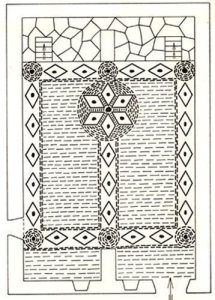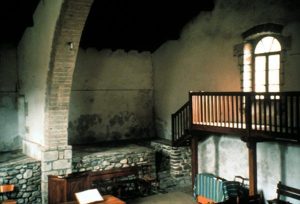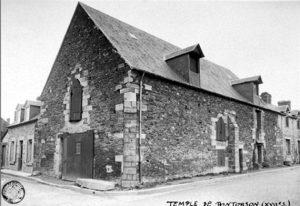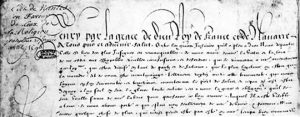A temple linked to the Edict of Nantes
Services were held at the parish church in the great hall of the castle, or the township’s kitchens until the Edict of Nantes. But the Reformed wanted their own temple.
Unusual construction materials
In 1646 the temple in Collet-de-Dèze was built with quartz and schist from the Gardon River. The edifice, with its 15m long and 10.50m wide hall, was built on the rock.
The pitched roof was topped by a turret.
Inside, a semicircular arch rested on two 2.3m wide and 2.7m long walls. Benches for the elders were set on a rostrum. The floor consisted of stones from the river featuring a remarkable geometric pattern.
The temple was spared
A 1661 decree stipulated that all temples built after the Edict of Nantes were to be destroyed. The one in Collet-de-Dèze was spared until the Revocation.
After the Revocation the edifice may have been saved thanks to marchioness of Portes who had it turned into ” the new chapel for the Catholic mission”.
It survived the 18th and 19th century troubles. When the Revolution broke out, it still belonged to the Conti, descendants of the marchioness de Portes. It was confiscated in 1797, and then bought back by the Protestants of Collet-de-Dèze. It was slightly modified in the 19th century -an oak tribune and staircase were added- but has been safeguarded until today as an example of the specific architecture of temples in the Cévennes region.




